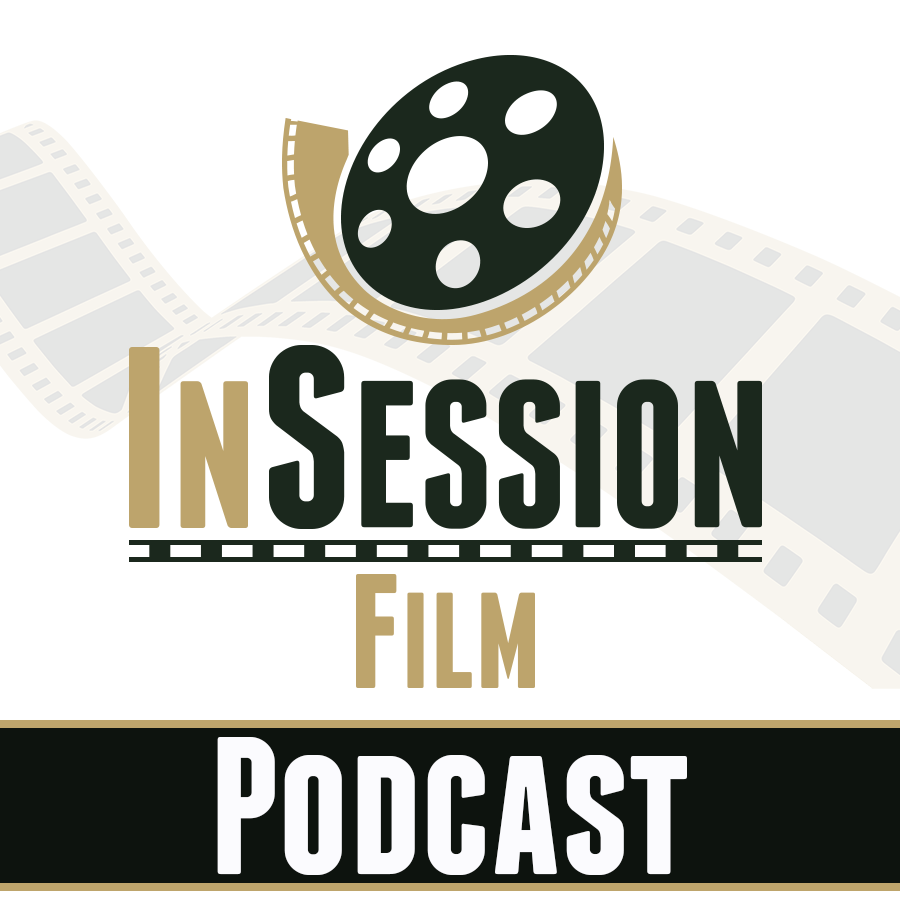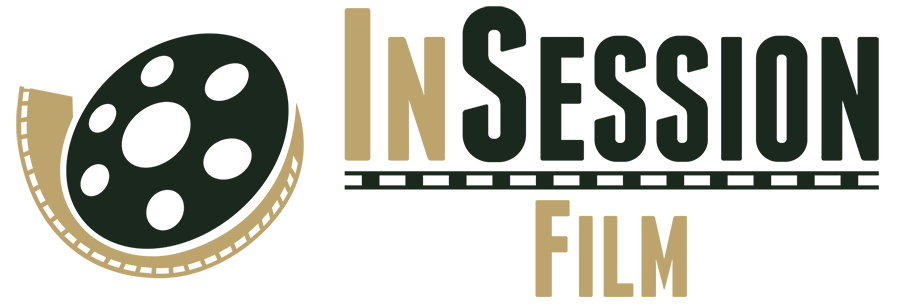To many, Disney is not just an art or genre in and of itself. Different generations grew up with all eras of Disney animated films, from the start with Snow White and the Seven Dwarfs in 1937 to the resurgence in the early 1990’s with The Little Mermaid and Beauty and the Beast. And with many classics still in between, this has created an empire of 56 films by Walt Disney Animation, and a timeless one that will only continue to grow instead of die.
So to reinstate the top, Disney is not just an art in and of itself; Walt Disney was a childhood friend to us all, and a friend to many children still today. His films offered us a window to the soul of a child, filled with imagination and fantasy without sacrificing honesty or even heartbreak. In other words, Walt Disney taught us all how to grow up.
With the release of Bill Condon’s Beauty and the Beast, the latest in Disney’s string of live-action remakes, I felt compelled to revisit my favorites in the Disney animated canon, and decided to share these thoughts in a list of my top 10 favorite films by Walt Disney Animation Studios (not including Pixar or any existing live-action films). The beauty of Disney is that we all can have very personal reasons for responding to these films and in different ways, which is my friendly way of saying that you will NOT agree with this list; just don’t get angry when you see some of your very favorites near the bottom of my own list.
On with the show…
[divider]
Brendan Cassidy’s Top 10 Favorite Disney Animated Films:
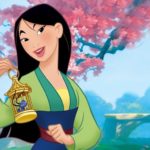 10) Mulan (1998)
10) Mulan (1998)
Some would argue that Mulan was the last great film of Disney’s 1990’s resurgence, and coming after a string of arguable misfires (I personally don’t care for Pocahontas or Hercules, nor did I love Tarzan which came after), it wasn’t just a welcomed return, but also a progressive one. Featuring an incredible female lead, with spunk and sympathy to boot, Mulan set a precedent for how ahead of its time animated films could ultimately be. And with today’s films looking to embrace feminist notions, Mulan came in at just the right time. This progressiveness would be worthless if the film itself wasn’t anything special on the surface, but it is thankfully epic in scale, exciting, and dramatically stirring. Plus it features some of the best songs during the Disney resurgence in “I’ll Make a Man Out of You” and “Reflection”.
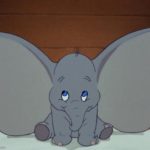 9) Dumbo (1941)
9) Dumbo (1941)
Dumbo is one of Disney’s most efficiently told films, clocking in at just over one hour yet conveying such powerful notions on discrimination and motherhood; if you don’t tear up during the “Baby Mine” sequence, I have nothing to say to you. But what makes Dumbo so much more fascinating is how our main characters are mere observers; Dumbo and his mother never speak a word, with all dialogue reserved for the supporting characters. This makes Dumbo a surprisingly introspective film, and conveys the film’s notion with that much more pathos because of that approach. Perhaps the drunken pink elephant scene goes on a little too long, but for a film at just over one hour, it’s an easy one, to revisit. It also makes me wonder if the film’s notions of flight drew any influence from WWII; this was 1941 after all.
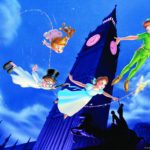 8) Peter Pan (1953)
8) Peter Pan (1953)
I can acknowledge that Peter Pan was a product of the times, especially with its depiction of Native Americans, which feels like controversial stereotyping nowadays. But with those imperfections aside, Peter Pan represents every young boy’s dream; adventure, pirate fighting, effortless flight, and infinite childhood innocence. Peter Pan is one of the most enjoyable films in the Disney canon, with absolutely stunning imagery and a great sense of humor; Peter himself has a loveable cockiness that never annoys, and the relationship he forms with Wendy is adorable perfection (their first exchange when he states how girls talk too much is something I can watch on endless repeat). The rivalry between Wendy and Tinkerbell as they battle for Peter’s affection never crosses the line, and instead helps complement the film’s notions of avoiding adult temptations, despite adulthood’s inevitability. And you can’t talk Peter Pan without mentioning Captain Hook, one of the best and funniest Disney villains; yet another scene I can watch on repeat is Hook and Smee’s slapstick routine with the crocodile.
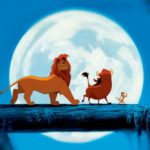 7) The Lion King (1994)
7) The Lion King (1994)
I know, I’m a traitor for only have this at number 7. So let me start off by saying that I love The Lion King; it’s the largest and most cinematic of Disney’s films, the animation is beyond breathtaking, and its notions on hiding from your past are admirable and poignant. On top of that, the film gives us one of the most heartbreaking deaths in any Disney movie, as well as one of the more compelling villains of Disney’s renaissance period. Why it only sits at number 7 for me may have to do with the massive time jump that occurs halfway through the film, and if I’m being honest with myself, the later romance between Simba and Nala always felt slightly forced for me (maybe that’s because I just never cared for “Can You Feel the Love Tonight”, go ahead and hate me). But the remaining songs are beyond catchy and pertinent to the film overall, and you cannot deny the film’s overall sense of greatness. I just wonder how I would feel about the film if it wasn’t as cinematic.
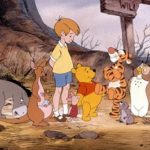 6) The Many Adventures of Winnie the Pooh (1977)
6) The Many Adventures of Winnie the Pooh (1977)
Why do we find it so easy to love Winnie the Pooh himself? As I ponder this, but also look at him from Christopher Robin’s own perspective, Winnie the Pooh is our outlook into childhood insecurity and growing up. Many of us have had imaginary friends, or perhaps gave living personalities to our toys, and they’ve all been a reflection of our own childhood experiences and mistakes, a way of comprehending those experiences. This is what Pooh himself embodies with such a loveable innocence, and The Many Adventures of Winnie the Pooh, through its series of highly entertaining vignettes of trouble and friendship (all friends with such distinct personalities), captures it all with childlike wonder. For these reasons, the film resonated with me even more upon a rewatch. But what sealed this into my top 10 were the final moments shared between Pooh and Christopher Robin; “Pooh, promise you won’t forget me? Ever?” Wow; now I can see where Toy Story 3 got its influence from.
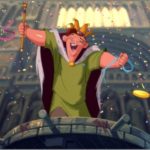 5) The Hunchback of Notre Dame (1996)
5) The Hunchback of Notre Dame (1996)
“You have THIS above The Lion King?!” I’m sure that’s what you’re thinking, but let me explain my personal preference. As a movie, I do acknowledge The Hunchback of Notre Dame has problems; the gargoyles are a bit obnoxious, and the narrative structure (especially as it relates to the gypsies) can get quite messy. But through a more subjective lens, this is one of the most daring and thematically rich films Disney has ever released, and it moves me immensely. It can be viewed superficially as a story of how appearances can be deceiving, but what I respond to most are the film’s notions on open-mindedness as it relates to the contradictions of religious faith. Frollo himself is a walking contradiction to this all, and even acknowledges that he is, making him one of my very favorite Disney villains; he uses his beliefs for political dominance yet still lusts for a gypsy woman who’s culture he sees as demonic. On top of that, Quasimodo’s plight is as beautiful as it is tragic, and I also fully buy into the friendship he forms with Esmerelda and Phoebus (notice I said “friendship”, the romance between those other two works wonders for me). Oh and for the record, the gargoyles are a figment of Quasimodo’s imagination; there, I said it. Also, Alan Menken’s songs rank among some of the best work he has ever done; there, I also said it.
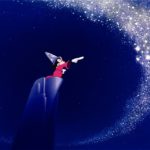 4) Fantasia (1940)
4) Fantasia (1940)
Fantasia is, in a word, fascinating. An animated symphony of colors and movement, the film flows more like an experiment than an actual film. This will turn off some people, and while it’s a film I don’t come back to as often for pure enjoyment, it’s one I consistently ponder over. As a music lover myself, the idea that music can evoke a vivid sense of visualization is where this experiment works wonders. Throughout much of the film, particularly the first segment featuring abstract images backed by Bach’s “Toccata and Fugue in D Minor”, I found myself trying to imagine how I would visualize these musical sequences. Sometimes I agreed with the film’s visual choices, other times I did not, and that was the joy in the film for me. While I have fun with the classic Sorcerer’s Apprentice vignette, it’s this sense of musical to visual questioning that sticks with me most. And for such a solely visual experience to evoke thematic questions around religious faith, science, and nature, that’s monumental; these notions are summed up in the final “Ave Maria” sequence (by Franz Schubert), one of the most breathtakingly beautiful sequences ever put to animated film.
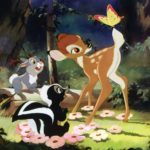 3) Bambi (1942)
3) Bambi (1942)
To find myself ranking Bambi this high was a surprise to me. In my revisiting of this film, I had an experience that was so unlike how I remembered it from my childhood. As a child, you respond to the cute and adorable forest dwellers like Thumper and Flower, but as an adult, I was completely hypnotized by the film’s gorgeous watercolor greens, its efficient storytelling (in only 70 minutes), and the organic and natural growth of our central hero. I think Bambi is a nearly perfect movie, through and through. Bambi is one of my favorite coming-of-age tales, and arguably one of the most fascinating films ever to depict parenthood. Some have argued about the film’s “flawed” notions on the absent father figure (heck, even Roger Ebert wrote that Bambi was one of the earliest films depicting sexism), but the significance comes in Bambi’s learning of love and companionship (from his mother) while balanced with survival and individualism to be his own man (from his father). Bambi’s stance in the film’s final shot is one of the most striking and beautiful moments in animated film history, an overcoming of how tragedy can strike at any place and any time (for the record, I don’t see the film as a stance against hunting), all coupled beautifully with the film’s wonderful score and song in “Love is a Song”.
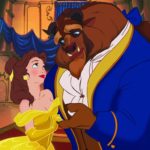 2) Beauty and the Beast (1991)
2) Beauty and the Beast (1991)
Not just one of my all-time favorite animated films, but one of my favorite musicals of all time. There’s not much more I can say that hasn’t already been said on our Extra Film episode where we reviewed this beauty (pun intended), so I recommend you check that out. In a nutshell, Beauty and the Beast features my very favorite Disney princess in Belle (a humanly selfish and selfless being representing the greatest notions of womanhood and individualism), and also features the best work of Alan Menken and Howard Ashman’s career. The film’s title song, teaching lovers to look into each other’s hearts instead of their flaws, is coincidentally flawless. And so is the film. Click here to listen to our full review of this animated classic.
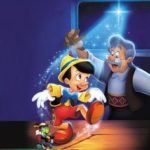 1) Pinocchio (1940)
1) Pinocchio (1940)
Jiminy Cricket asks, “Maybe you and I had better have a little heart to heart talk.” And Pinocchio innocently responds, “Why?” For Disney’s second feature film, the charm of Pinocchio is seeing our young hero behave so distinctly like a little boy; he questions everything, fails to understand Jiminy Cricket’s sarcasm (his screaming of “Goodbye Honest John” always cracks me up), and still manages to find joy even amidst the trauma. Pinocchio himself is the everyboy, which makes Geppetto the everyman, and watching the film from Geppetto’s point of view sheds new light into this story. We can sense that Geppetto has a potentially dark and lonely past, one that is wonderfully never explained; he’s a talented woodcarver with arguably too much time on his hands (clock symbolism?) due to a lack in companionship. Geppetto doesn’t just wish for a boy, he wishes for a family. These added layers on fatherhood, and even religious faith (I’ll let you theorize who the Blue Fairy represents), make Pinocchio a riveting coming-of-age film, especially riveting when you learn you’ll turn into a jackass if you drink and smoke under age (shudders). We may selfishly wish for things in our own lives, but a wish’s power only proves truthful when you rightfully earn it, and no better time to learn such a lesson than your youth. Pinocchio is arguably perfection, and one of the best coming-of-age films in any genre. Either Walt Disney wished upon a star to make such a gorgeous film, or he was just insane enough to work hard at it; I’m thinking it was both.
And in case you’re wondering where your favorites would rank further on my list, here is how I would round out my top 25.
11) The Fox and the Hound
12) Alice in Wonderland
13) Robin Hood
14) Tangled
15) Zootopia
16) Wreck-It Ralph
17) The Jungle Book
18) Aladdin
19) Lady and the Tramp
20) Cinderella
21) Snow White and the Seven Dwarfs
22) The Little Mermaid
23) The Princess and the Frog
24) Winnie the Pooh
25) Lilo & Stitch
[divider]
See JD’s Disney ranking on Letterboxd!
[divider]
So, do you disagree or disagree heavily? Let’s at least agree on one thing; we all love Disney. Thank you, Walt. Leave a comment in the comment section below or tweet us @InSessionFilm.
To hear us discuss the latest live-action Disney remake in Beauty and the Beast, subscribe to us on iTunes, Stitcher, Soundcloud or you can listen below.




